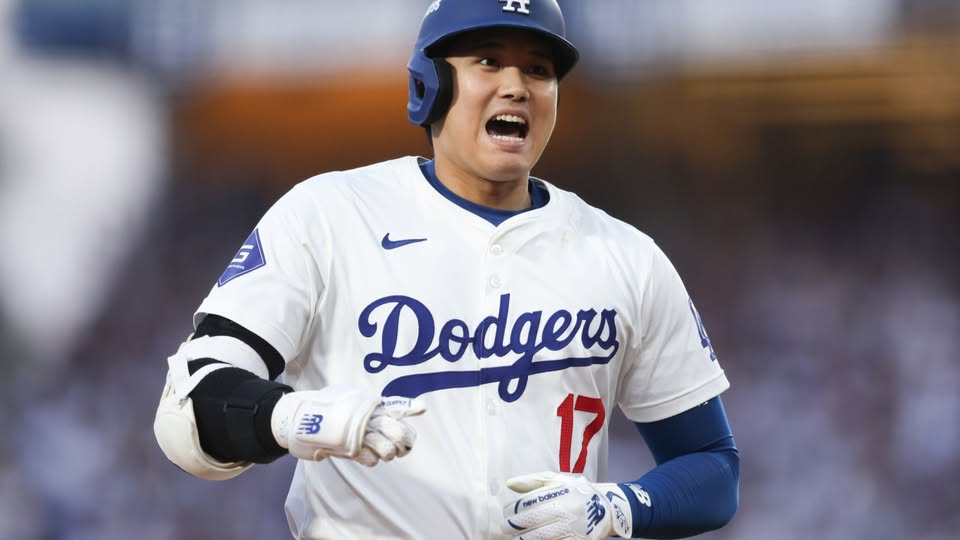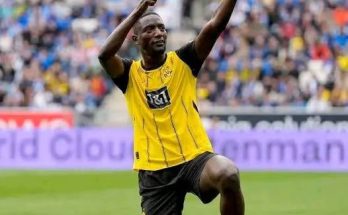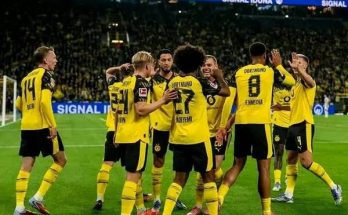It wasn’t long ago that the Los Angeles Dodgers welcomed Shohei Ohtani in a flurry of fanfare, making him the centerpiece of one of baseball’s most ambitious roster ambitions. Yet as Ohtani begins a cautious return to the mound—still healing from a second Tommy John surgery—the ripple effects extend far beyond Dodger Stadium. One such reverberation touches a former Dodger All‑Star, whose future now feels far more uncertain amid shifting roles, roster adjustments, and the intangible pressures of aligning elite talent with organizational priorities.
Late December of 2023, the Dodgers made a seismic sports-business move by signing Shohei Ohtani to a ten-year, $700 million contract—the largest in North American pro sports history . Ohtani’s arrival reshaped LA’s roster blueprint: at once promising dual-threat dominance and causing inevitable lineup displacement, as existing stars saw their opportunities contract. Among them was a beloved former All‑Star whose identity had become entwined with the Dodgers—but whose playing time has now disintegrated in the wake of “Shotime.”
That All‑Star, the veteran designated hitter/outfielder, had delivered clutch moments in LA’s 2024 World Series run—most notably a game-tying double in the pivotal fifth game versus the Yankees . His powerful swing, postseason heroics, and clubhouse gravity made him a fan favorite and valuable lineup presence. But entering 2025, he found himself in a precarious position.
On March 18, Ohtani resumed his two-way role-capable routine, delivering a simulated outing and signaling his desire to pitch midseason—even earlier than anticipated Managers and medical teams noted his velocity reaching 99–100 mph, though his command still showed signs of caution as they carefully ramped him back into activity.
These developments are both exhilarating and disruptive. Exhilarating because witnessing a generational talent reclaim his two-way role redefines baseball archetypes; disruptive since Ohtani’s bench time as a designated hitter—and occasional relief pitcher—inevitably displaces other established hitters. The former All‑Star now watches from the dugout more than he once did, squeezed out by Ohtani’s cash‑loaded presence and positional versatility.
The veteran’s unease is compounded by Ohtani’s recent candid self-assessment. In late March, the two-time MVP shared that he views this stint as likely “my last chance as a pitcher,” acknowledging the need to balance intensity with preservation, aware that longevity and spectacle rarely coexist This admission reveals a dual-edged reality: Ohtani is fiercely driven still to perform on the bump, but his team must now temper his role in ways that inadvertently reshape the role of others—even if they remain healthy and productive.
It’s not only about playing time. The implicit message is that the Dodgers are fully committed to preserving Ohtani’s arm and bat, reengineering rotations, DH slots, and bullpens to accommodate him. Already, around Opening Day, it was “very unlikely” he’d be ready to pitch—preseason reports trusted he might contribute mid-to-late season As Ohtani remained sidelined from the mound through May, each week in the lineup, he diluted the opportunities of other hitters.
As a result, the veteran All‑Star has entered a holding pattern, his spring full of “opportunity waiting” but with diminishing concrete roles. The Dodgers’ roster is now crowded with high-ceiling talent—from Ohtani, Mookie Betts, Freddie Freeman, Teoscar Hernández, and Yoshinobu Yamamoto—and roster real estate has become ultra-precious . Even a strong 2024 season can’t guarantee renewed playing time in such a stacked configuration.
These roster crunches spring from a strategic equation: the Dodgers spent record capital bringing in Ohtani and Yamamoto, and as a result they must adapt their lineup around these stars—even at the expense of previously cornerstone players. If Ohtani can pitch once a week while also hitting nearly every game, it’s a triumph of baseball planning—but one that purposely squeezes others out.
Let’s examine the pressure points more closely:
First, there’s the internal dynamic. Dodgers insiders reportedly whisper of “friction behind the scenes” regarding Ohtani’s role and the pace of roster realignment Some within the organization question whether doubling down on Ohtani is sufficiently flexible: will the team be willing to pivot if things go sideways? That tension inevitably translates into anxiety for existing players whose roster futures appear hanging by Ohtani’s tendons.
Second, there’s the external opportunity cost. The former All‑Star, still possessing power and postseason pedigree, now faces diminished at-bats. Statistically, his output may stay solid, but plate appearances count. Less opportunity means less chance to prove value—especially when old names don’t match the name recognition that Ohtani commands. That undercuts arbitration leverage, limits future trade market value, and complicates contract talks.
Third, financial ramifications in a deferred contract era. Ohtani structured much of his contract deferral into future decades, meaning current payroll flexibility will be needed for his rehab team and emergent talent . That means the Dodgers could be less able—or willing—to mix in veteran contracts to sweeten bench depth, further squeezing the margin for underutilized players.
Fourth, the two-way workload challenges. Ohtani’s admission he may never again have consecutive marathon innings frames his return as cautiously optimistic If he falters—elbow setbacks, labrum flare-ups, bullpen fatigue—the Dodgers are prepared to shut him down early, even midyear. That’s good medicine, but handicaps the DH spot, further limiting other bats.
As the first half of the 2025 regular season unfolds, Ohtani has already pitched once—in mid‑June versus San Diego—and dazzled both on the mound and at the plate, showing flashes of double-digit velocity and clutch hitting—single, double, RI—just hours apart . The baseball world took notice: a two-way phenomenon still exists, still performs.
But from the vantage point of the veteran All‑Star displaced by Ohtani’s return, the moment is bittersweet. He cheers on his teammate yet wonders where that leaves him. The Dodgers’ lineup is healthier and deeper than ever, richer with international talent and contract fodder. It also rolls deeper into uncertainty—each game featuring Ohtani hogs starts, but his future remains fragile.
That fragility ripples across the roster. If Ohtani sustains another injury—as feared—will the Dodgers pivot back toward normalcy? Or have they already buttoned in this strategy, willing to unload veterans to preserve financial and development flexibility? The former All‑Star finds himself oscillating between states: still welcomed, still impactful, but arguably less essential in the short term.
For the veteran himself, the crossroads has arrived. He must now decide: remain patient and hope the Ohtani gravitational pull loosens over stretches, or push for outside opportunity via trade, or accept slotted bench roles as phaseouts begin. Each path holds risk—staying betwixt stardom and summary exit, or betting on fresh markets that may only see his declining role as a fallback option. No position feels comfortable.
Meanwhile, the Dodgers must chart organizational balance. Their biggest bets are on Ohtani and Yamamoto, but long-term success depends on outfield consistency, bullpen stability, and secondary sluggers. The former All‑Star still helps—is an asset. But the question becomes: how much value does LA place on him compared to the wizardry of managing Ohtani’s arm?
If Ohtani’s twin talents endure, his presence is justification enough for the roster shifts. But if his arm fails him once more—or if the Dodgers can’t transform Ohtani’s philosophy into sustainable two-way management—the fallout includes sidelined stars and the full viability of last year’s World Series club in question.
Looking ahead, the Old‑Dodge pivot may rest on one or two things: whether Ohtani stays healthy enough to make midseason starts regularly, and whether LA’s front office believes parting with a former All‑Star yields greater upside than reshaping around him. Either outcome signals a seismic change in club direction, regardless of the resulting roster moves.
For now, though, Ohtani’s comeback captivates headlines. But in his wake, the displaced veteran walks through the clubhouse a little quieter, a little less confident. He knows what he’s done. He knows he can still produce. But he also knows baseball is unforgiving, especially when another star arrives bearing both money and miracle.
In this game of talent Tetris, Ohtani’s return completes a few towering rows—but also clears the space for new pieces to fall. For some, like the former All‑Star, that means the board may soon lack room for his tile unless he shifts shape—to bench spark player, to trade bait, to designated pinch-hitter extraordinaire.
Ultimately, the Dodgers find themselves juggling both visions: preserving a future Hall‑of‑Fame talent and rewarding loyal contributors. None of it is easy. Every cameo taken by Ohtani chips away at someone else’s spotlight. And the cost of preserving greatness sometimes comes as an uncomfortable ledger entry, even for those who earned their stripes alongside it.
As the Dodgers chart the mid‑season era of two-way integration, the fates of established players hang in the balance. Their contracts remain on the books, their value remains on ice. Their futures stand uncertain—just like that of the former All‑Star overshadowed by a superstar’s return, searching for a next chapter he never wanted to begin.
The irony is brilliant and painful: Ohtani’s resurgence inspires the sport, redefines roles, and counters expectations. But it also narrows horizons for those who flourished just before him. What lies ahead for the former All‑Star is a choice as dramatic as the narrative itself: fight to remain, shift to adapt, or journey elsewhere. In baseball, as in life, every new dawn can eclipse a prior twilight—and that uncertainty now defines both sides of Shohei Ohtani’s Los Angeles story.



